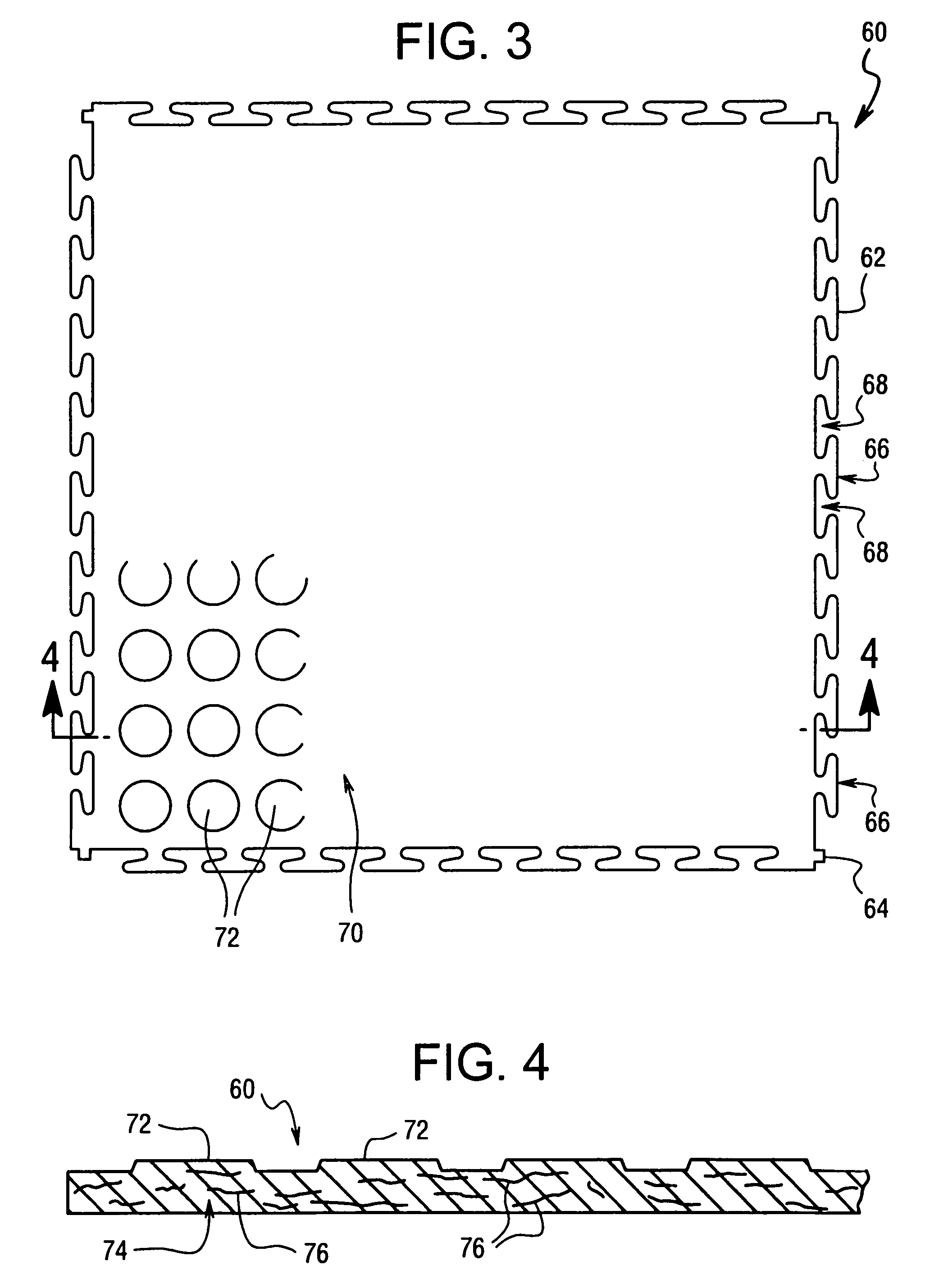Product and process for producing a molded product from recycled carpet waste
a technology of carpet waste and molded products, which is applied in the direction of single unit paving, turning machine accessories, synthetic resin layered products, etc., can solve the problems of large volume of waste in landfills, inability to readily biodegrade, and many plastics are very difficult to recycle into usable materials, so as to reduce the length of the fiber
- Summary
- Abstract
- Description
- Claims
- Application Information
AI Technical Summary
Benefits of technology
Problems solved by technology
Method used
Image
Examples
Embodiment Construction
[0026]The present invention is primarily directed to a molded product and to a process for making a molded product using recycled carpet scrap. The invention is particularly directed to a process of forming a matrix of a substantially uniform mixture of a polyvinyl chloride base material and carpet fibers dispersed therein.
[0027]The carpeting in preferred embodiments of the invention is waste carpet scrap having a fiber component formed of various polymeric materials. In embodiments of the invention, the backing or binding material of the carpet contains polyvinyl chloride as a primary polymeric component. The backing material preferably contains about 30% to about 50% by weight of polyvinyl chloride based on the weight of the backing.
[0028]The recycled carpeting can include a combination of components which are made from various polymeric materials including, for example, polyvinyl chloride, polycarbonates, nylons, polyethylene terephthalate, acrylonitrile-butadiene-styrene copolym...
PUM
| Property | Measurement | Unit |
|---|---|---|
| length | aaaaa | aaaaa |
| melting point | aaaaa | aaaaa |
| melting point | aaaaa | aaaaa |
Abstract
Description
Claims
Application Information
 Login to View More
Login to View More - R&D
- Intellectual Property
- Life Sciences
- Materials
- Tech Scout
- Unparalleled Data Quality
- Higher Quality Content
- 60% Fewer Hallucinations
Browse by: Latest US Patents, China's latest patents, Technical Efficacy Thesaurus, Application Domain, Technology Topic, Popular Technical Reports.
© 2025 PatSnap. All rights reserved.Legal|Privacy policy|Modern Slavery Act Transparency Statement|Sitemap|About US| Contact US: help@patsnap.com



